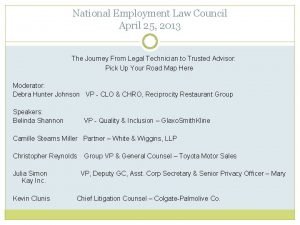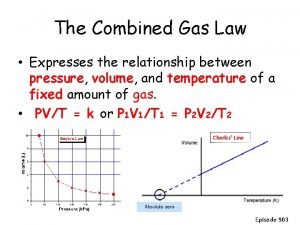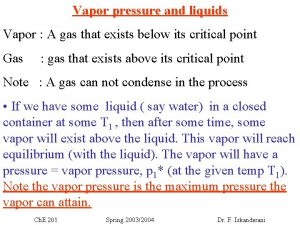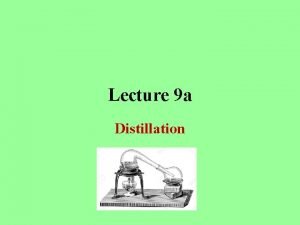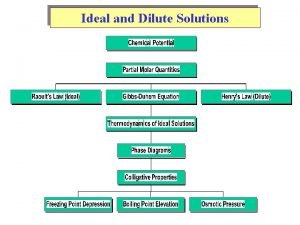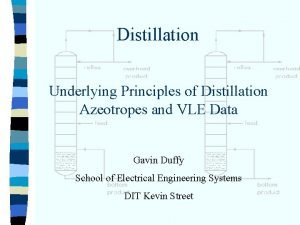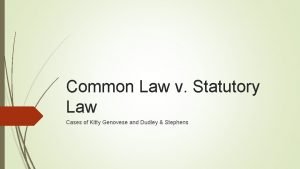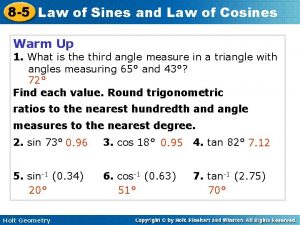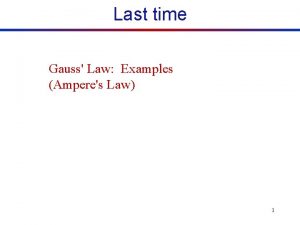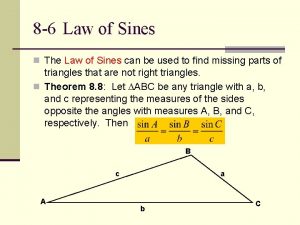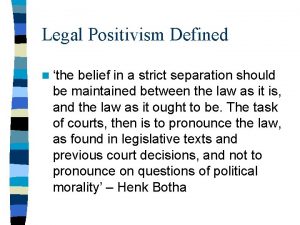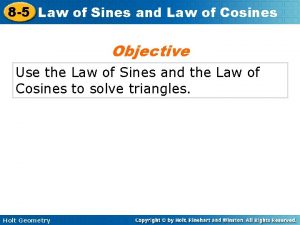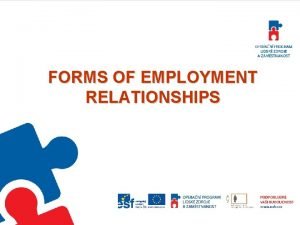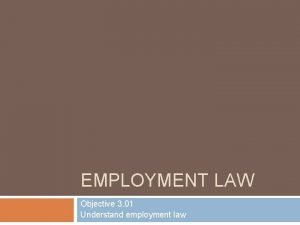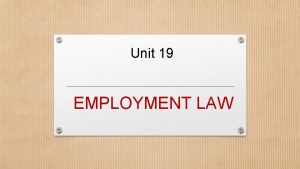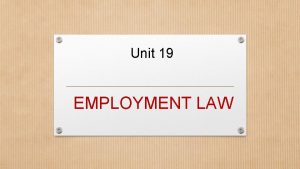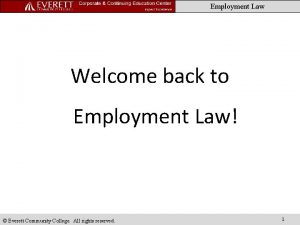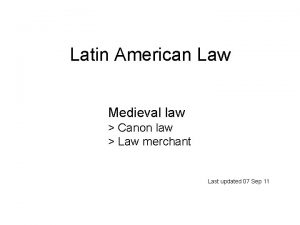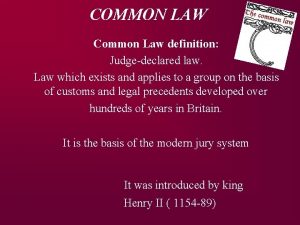Employment Law Employment and other working relationships THIS



























![Fair Work Ombudsman v Happy Cabby Pty Ltd & Anor [2013] FCCA 397 Happy Fair Work Ombudsman v Happy Cabby Pty Ltd & Anor [2013] FCCA 397 Happy](https://slidetodoc.com/presentation_image_h/abd71cd9576195db5dcfa871a03e9d7c/image-28.jpg)









- Slides: 37

Employment Law Employment and other working relationships

THIS WEEK • Understand distinguish a contract of service from a contract for services • Apply the appropriate test to determine whether a worker is an employee engaged in a contract of service from an independent contractor engaged in a contract for service • Understand why employment status matters • Recognise other working relationships 11/27/2020

An Important Distinction Employee Independent contractor Contract of service Contract for services 11/27/2020

EMPLOYEE VS INDEPENDENT CONTRACTOR • Employment – Employment contract of service where employee provides labour as personal service in exchange for wages • Independent Contract – Is a contract for services - contractor is engaged to perform a particular agreed task or tasks. They invoice for payment after completion of the task.

Rights and Obligations The legal consequences The employment relationship creates many rights for employees (as well as obligations) These rights are reciprocated in terms of obligations imposed upon employers.

Vicarious liability Employer liable for actions of employees • Often advantageous to sue the employer rather than the employee – Employer likely to have more $$ – Access to insurer – Likely to be able to be “tracked down”

Vic. Sweeny v Boylan Nominees (2006) 226 CLR 161 Faulty fridge door at BP service station hit plaintiff on the head plaintiff sued Boylan Nominees, the company that supplied and maintained the fridge, for the negligence of the mechanic (Mr Comninos) who repaired the fridge, alleging Boylan is vicariously liable. Found that Mr Comninos was an independent contractor therefore Boylan was not liable for the negligence (Page 16 of text book)

Why Make The Distinction? Benefits of being an Employee Legal obligations flow from the employment relationship such as: • Superannuation – employer’s contribution • Tort law (e. g. liable for worker’s injury at workplace) • Pay workers’ compensation premiums • Protective statutes eg: notice of termination, unfair dismissal, providing paid recreation leave, sick leave, long service and other leave entitlements, Workers Rehabilitation and Compensation

Con. Benefits of being an independent contractor • Taxation (personal services income, Prescribed Payment System) • Contractors have more flexibility, can delegate work to others • Record keeping, own insurance, chasing work, • The more highly skilled the likely the more better off…

LAWS THAT APPLY EQUALLY • Discrimination • Work Health and Safety Both are protected under the Adverse action provisions of the FW Act 2009 (Cth)– s. 342 on unfairness and victimisation. Also consider Independent Contractors Act 2006 (Cth) – (See ss. 9, 15 and 16)

Contractor v Employee So how do you make the distinction? (Rarely defined in legislation so left to common law) ***MULTIFACTOR TEST**** Developed and incorporates historic tests.

Tests of Employment Employee or Independent Contractor Case history on tests • Control Test • Integration/Organisation Test (not accepted in Australia) • Business/Economic reality test **Multifactor test (or totality test)*** “the totality of the relationship” approach as was in Hollis v Vabu

CONTROL TEST - CASES Zuijs v Wirth Bros (1955) 93 CLR 561 Trapeze artist fell while performing and was injured. He was engaged as part of a team. Was he an employee? • Only Z knew how to be an acrobat, so how could W control his work? • W had general control over Z’s employment Held: The test is not about the actual control but the “right to control”

CONTROL TEST The control test is not the current test but is incorporated into Multifactor Test. Aspects considered from this test • Right to control overall operation • Supply of materials and equipment • Direction of time and sequence of work

OTHER TEST Integration Test Is a worker “part and parcel of the organisation” *Not an applied test in Australia*** Does not really distinguish well enough Business/Economic Test Employee economically dependent on an employer and have no business of their own *Part of multifactor test* Ready Mix Concrete Test Identified a threefold test - Wage for Service (Master/Servant) Agrees performance under control of master Provision are consistent with contract of service. **Criticised – not accepted in Australia**

MULTI FACTOR TEST “RELATIONSHIP IN TOTALITY” • CONTROL IS IMPORTANT BUT NOT THE ONLY FACTOR • MUST LOOK AT EVERYTHING Currently the test in Australia

MULTI FACTOR TEST Totality of the relationship • Incorporation into organisation • Intention • How things happened (eg. Hours, tax, pay) • Bearing of risk -loss, profit

Stevens v Brodribb Sawmilling 1986 160 CLR 16 Logging – Sub contracted - Truck - Driver (Stevens) injured HCA Held : They were independent contractors • B had some control but no right to direct performance • S had own truck; set own hours; sub-contracted; no set wage • No personal relationship • Control a major test but not the only part

Multi Factor Test Hollis v Vabu Pty Ltd (2001) 207 CLR 21 • The Plaintiff [Hollis] was a cyclist who got hit by an unidentified person, who was working for the Defendant [Vabu] name on it. • The status of such couriers in the Defendant's organisation was undefined - it is unclear whether they were contractors or employees.

Hollis v Vabu Pty Ltd (2001) 207 CLR 21 • Paid according to delivery • Had to wear uniform • Told when to work • Told how much to charge • No expensive equipment Couriers on bikes HCA Held - Employees because their capital outlay was small

The Holistic Approach (Hollis v Vabu) • Little independence • Imposed work practices told how much to charge • Little investment in equipment • Vabu logo had to be worn • Little skill • Controlled annual leave • No freelance career • Work allocated by fleet controller (Vabu) • Bikes not just for work (Couriers)

Australian Air Express V Langford (2005) 147 IR 240 • Courier driver very similar to Vabu however • Had to supply truck ($$) • Could sub-contract to another driver HCA Held : Not an employee Right to substitute workers or sub-contract will not be an employment contract Contrary to employment

i. Abdalla v Viewdaze (2003)122 IR 369 This case set out various indicia that should be considered • Control or right to control • Whether works exclusively for employer • Whether worker has separate place of work • Supply of tools • Right to delegate work? • Risk of loss • Free to work for others? • Right to dismiss or suspend work? • Employer supplies uniform - livery • Tax • Periodic wage or on completion of task • Whether skill is involved • Leave, sick leave • Whether worker spends significant portion of income on business expenses

PROBLEM QUESTION Irene works at the Organicola factory packing soft drinks into cartons on school holidays; they have an understanding that if Irene wants to work on a particular day she can just show up without notice. Benedict and Martin pay Irene $50 a day to do odd jobs given to her by the shift supervisor. One day Irene slips over in some spilled cola that has been left on the floor and breaks her wrist. Benedict tells her that she is not really an employee. Is Benedict correct?

A Sham “independent contractor” Some “employers” represent the “worker” as an independent contractor to avoid obligations Labelling: Contract may even say “you are an independent contractor” however… Courts will look at all facts – does not matter what you call it (Narich Pty Ltd V Commissioner of Payroll Tax (1983) 50 ALR 417

Contract to avoid finding of employment • • Downplay control Freedom to work for others Allow delegation Invoicing Insist supply of tools Requiring insurance Deny paid leave FW Act ss. 357, 358 and 359

Section 357—Misrepresenting employment as independent contracting arrangement (1) A person (the employer) that employs, or proposes to employ, an individual must not represent to the individual that the contract of employment under which the individual is, or would be, employed by the employer is a contract for services under which the individual performs, or would perform, work as an independent contractor. (2) Subsection (1) does not apply if the employer proves that, when the representation was made, the employer: (a) did not know; and (b) was not reckless as to whether; the contract was a contract of employment rather than a contract for services.
![Fair Work Ombudsman v Happy Cabby Pty Ltd Anor 2013 FCCA 397 Happy Fair Work Ombudsman v Happy Cabby Pty Ltd & Anor [2013] FCCA 397 Happy](https://slidetodoc.com/presentation_image_h/abd71cd9576195db5dcfa871a03e9d7c/image-28.jpg)
Fair Work Ombudsman v Happy Cabby Pty Ltd & Anor [2013] FCCA 397 Happy Cabby operated shuttle vehicles to/from Sydney Airport to Newcastle They hired drivers as independent contractors. Happy Cabby • controlled the manner by which the independent contractors performed their work. • provided the bookings, • arranged the schedule of pick-ups and drop-offs, • owned the vans and arranged for the maintenance of the vans • determined the fare and collected the payment from the passengers. • required the drivers to make reports which they called ‘run sheets’. • Made the drivers wear a uniform which bore the transport company’s logo when they picked up the passengers • the drivers help up a sign with the company logo and the name of the passengers who will be picked up at the airport. • The company determined how much and how often the drivers will be paid for their services. • They had to render their personal service and they could not sub-contract

Building Workers Industrial Union of Australia v Odco Pty Ltd 1991 37 IR 380 Labour hire to building industry Employment agency provided workers to building industry contract was a contract of independent contractor Workers provided own equipment

Odco • Are the workers employees? • If so, of whom? • Co-employment? no Builders Workers

Concepts of Flexible Engagement • Outworkers or homeworkers • Casual employment • Labour-hire arrangements • Apprentices • Sub-contracting a contract of employment • Joint or co-employment

OUTWORKERS • Working from home… • Particularly clothing workers

Casual employment • Around 25% of Australians are casual • 2015 – 73% of 15 -19 year olds employed were casual. • Casual as distinct from permanent employment- informal, uncertain, irregular?

Casual employment • Casual loading as a trade off for lack of sick leave/annual leave- (eg 25%) • May still be entitled to long service leave if “on-going casual” as against “true- casual employee”. • See attributes of casual employee • Employers can “trial” workers • Not liable to “notice” of termination- severance pay

Casual employment • • Job security - nil Marginalisation on decision making in workplace Lack of bargaining power Lack of various leave- eg carers, annual, long service leave entitlements • Lack of job security

Terms Requirements for a valid contract Contract of employment Express/Implied Contract of service Employee Contract for services Independent contractor 11/27/2020 Personal relationship No personal relationship

NEXT WEEK CONTRACT FORMATION
 Newton's first law and second law and third law
Newton's first law and second law and third law Si unit of newton's first law
Si unit of newton's first law Hot working and cold working difference
Hot working and cold working difference Disadvantages of cold working
Disadvantages of cold working Machining operations
Machining operations Pembentukan logam
Pembentukan logam Smart work vs hard work
Smart work vs hard work Boyle's law charles law avogadro's law
Boyle's law charles law avogadro's law Constant of avogadro's law
Constant of avogadro's law National employment law council
National employment law council Employment law quiz
Employment law quiz Employment law alliance handbook
Employment law alliance handbook Other initiated other repair
Other initiated other repair Gas variable relationships
Gas variable relationships Other practical applications of boyle's law
Other practical applications of boyle's law Supply and demand board game
Supply and demand board game Raoult's law and dalton's law
Raoult's law and dalton's law Difference between civil law and criminal law
Difference between civil law and criminal law 4-7 the law of sines and the law of cosines answers
4-7 the law of sines and the law of cosines answers Introduction of distillation
Introduction of distillation Difference between civil law and criminal law
Difference between civil law and criminal law Thermodynamics equations
Thermodynamics equations Raoult's law and dalton's law
Raoult's law and dalton's law Difference between common law and statute law
Difference between common law and statute law Common law australia
Common law australia 8-5 law of sines
8-5 law of sines The vapor pressure of pure water at 110 c is 1070 torr
The vapor pressure of pure water at 110 c is 1070 torr Faraday's law
Faraday's law 8-6 the law of sines
8-6 the law of sines Law is order and good law is good order
Law is order and good law is good order Pactum commissorium vs dacion en pago
Pactum commissorium vs dacion en pago Common law and civil law
Common law and civil law Examples of civil law
Examples of civil law International contract
International contract Sine law and cosine law
Sine law and cosine law Positivism
Positivism 8-5 law of sines and law of cosines
8-5 law of sines and law of cosines Short run phillips curve
Short run phillips curve









